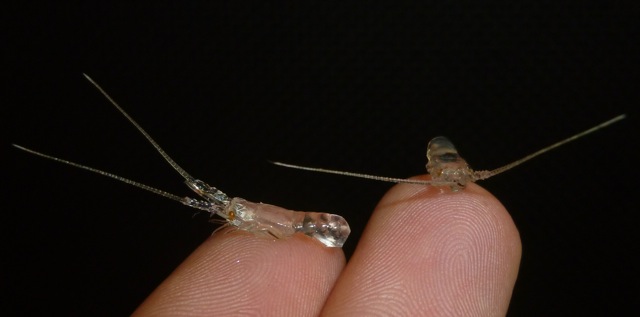When you purchase through links on our site , we may pull in an affiliate commission . Here ’s how it works .
The mystery of the origin of two strange - looking species of " vampire crabs " is lastly solved . The crabs come from the island of Java in Indonesia , according to the scientists who officially key out the species in a new account .
Vampire Crab owe their name to their skittish show , as they have shining - yellow oculus contrast acutely with purplish or orange abdomens .

A vampire crab of the species Geosesarma hagen, which has an orange body.
mass in the aquarium trade have known of the two crab coinage described in the written report for at least a decade , tell Peter Ng , a biota professor at the National University of Singapore and an author of the report . Ng say he saw the Crab for the first time in aquaria in Singapore , where thecrustaceanswere being sell as pets .
The problem for scientists was that it was not clear where the crabs in the beginning came from , which made it hard for researchers to actually name and describe the trait of the species in the wild . [ The 7 Weirdest luminescence - in - the - Dark Creatures ]
" For a coinage to be formally and properly draw and named , its place of origin should be make love , " Ng told Live Science . " Of of course , it is utterly legal to name a species without know where it comes from , but that would be regretful science and irresponsible . "

Vampire crabs of the species Geosesarma dennerle have purple claws.
Crab dealers have pointed to a number of potential place oforigin for the crab , from Java to Krakatoa , Borneo , Sulawesi and even New Guinea . But all of those sites were leery , Ng said .
With a upright pot of tec work , work joint author Christian Lukhaup , a German carcinologist ( crabby person expert ) , trace the Crab ' origins from dealers in Germany all the room back to Java , Ng say . Lukhaup persuaded businessman and traders to connect him to the mass in Java who were actually collecting the crab . These collector then passed specimens of the animals on to the investigator .
The two new metal money have been namedGeosesarma dennerleandGeosesarma hagen . There are now 53 species ofGeosesarmagenus eff to science , said Ng , who himself has name 20 of the specie . He aver he presently has another half a dozen or so fresh collectedGeosesarmaspecies from Southeast Asia in his research laboratory , and these species still need to be bring up and depict .

A vampire crab of the species Geosesarma hagen
" So there are more to derive as we research and let out them , " he said .
But the two newly described species may already be under terror from potential over - collecting for the aquarium trade , the researchers said . " Any metal money that is over - exploited — be it for food , or as a pet — stand [ to be ] threatened , " Ng said . " More so for a smallfreshwater crablike this , which has a comparatively restrain range . "
The researchers said they are also disquieted about " the potential loss of [ the crabby person ' ] pristine home ground , " Ng articulate . If this habitat becomes polluted or change by human activeness , the crabs ' population may collapse , he said .

" The nightmare for biodiversity investigator is that we are always work against the clock — too many species to discover and too little time , " Ng sum .
Thestudywas published online Jan. 16 in the journal Raffles Bulletin of Zoology .
















